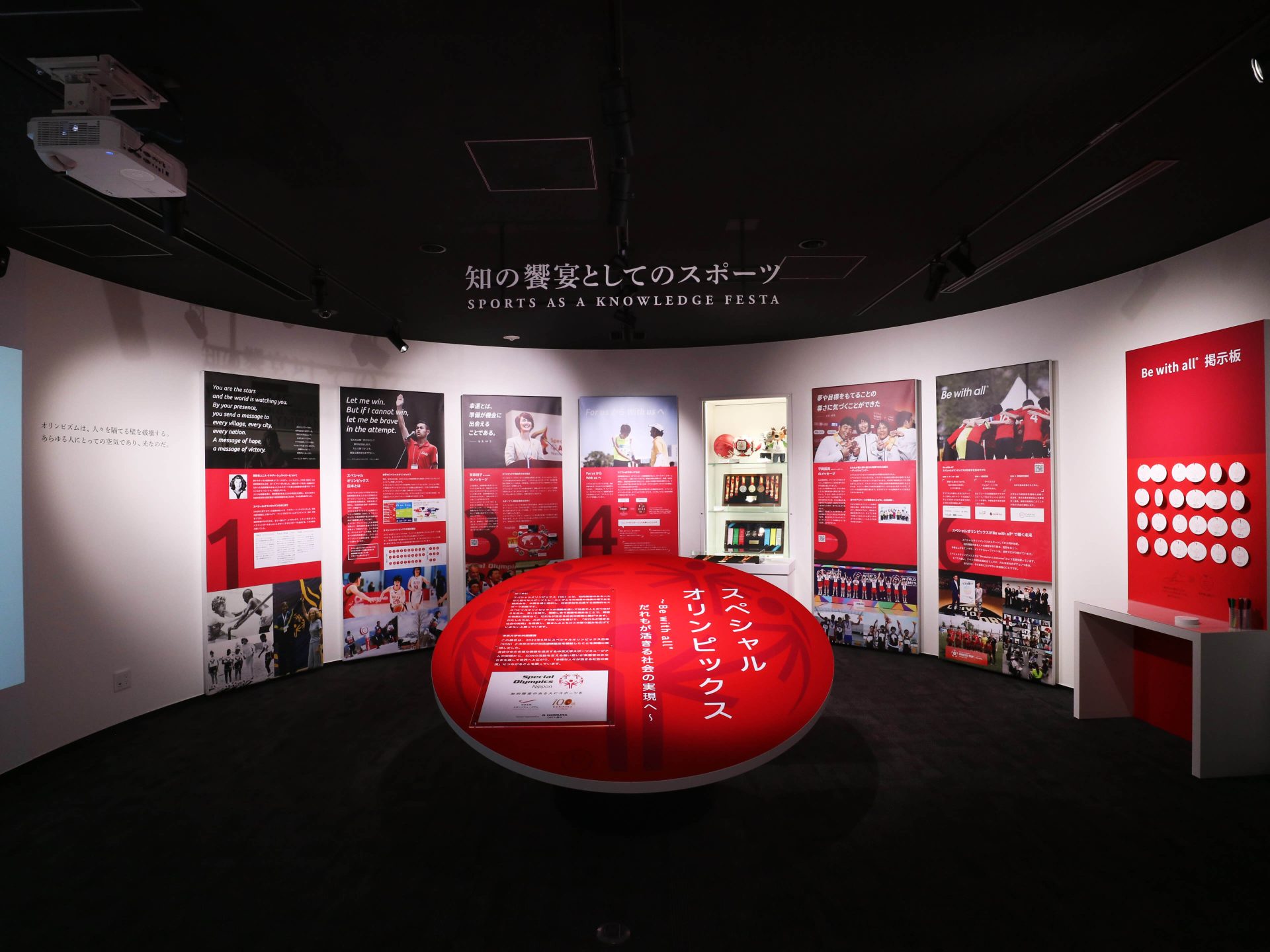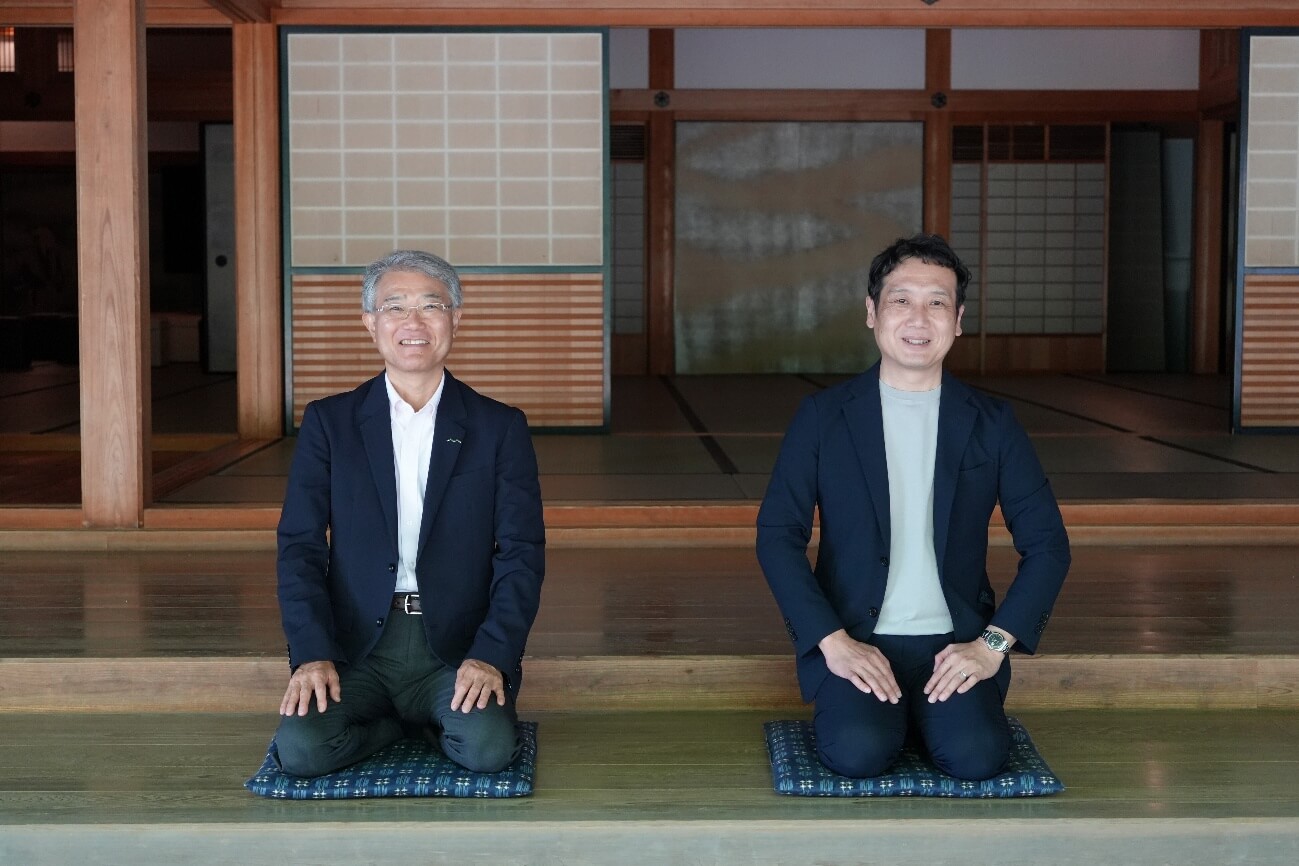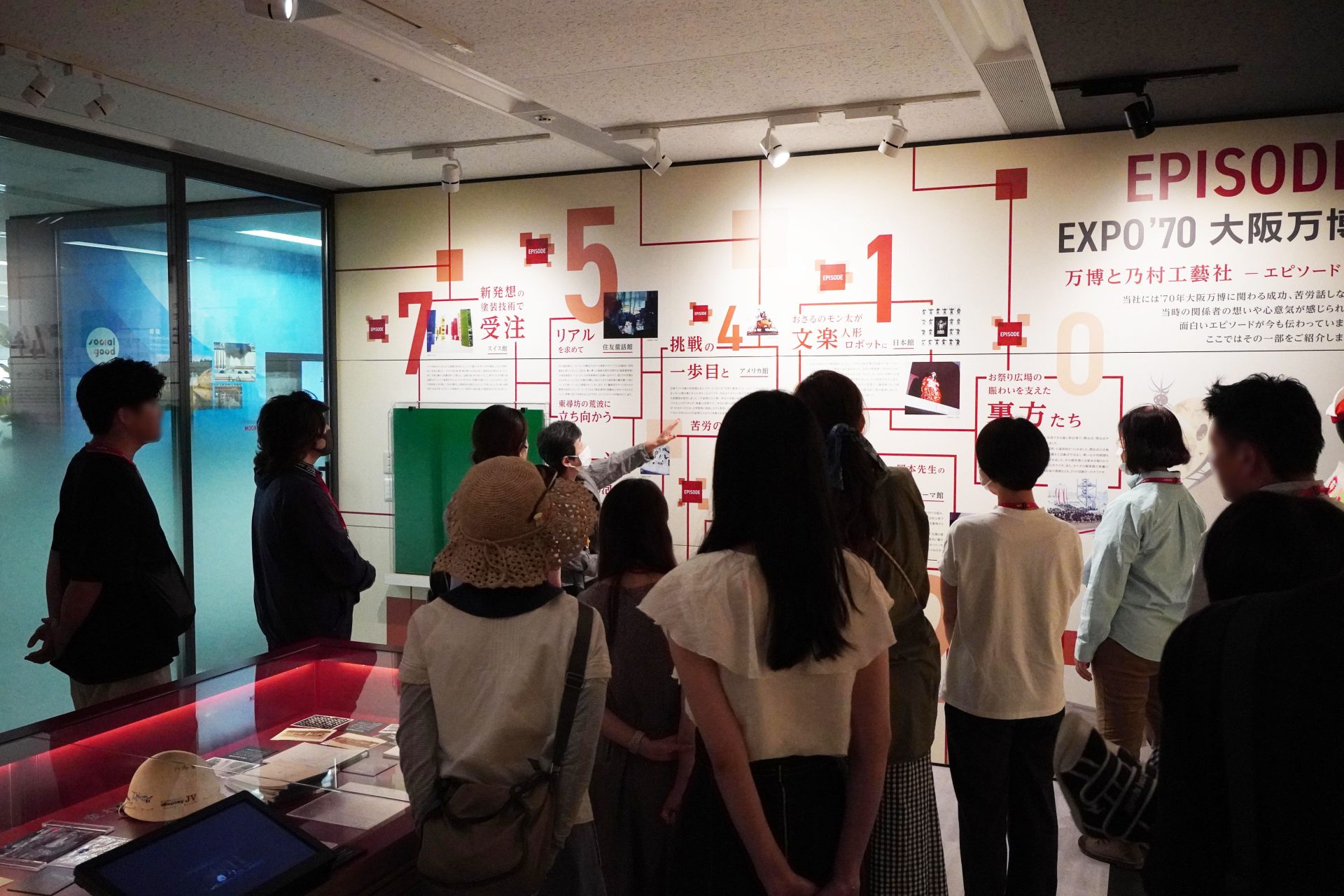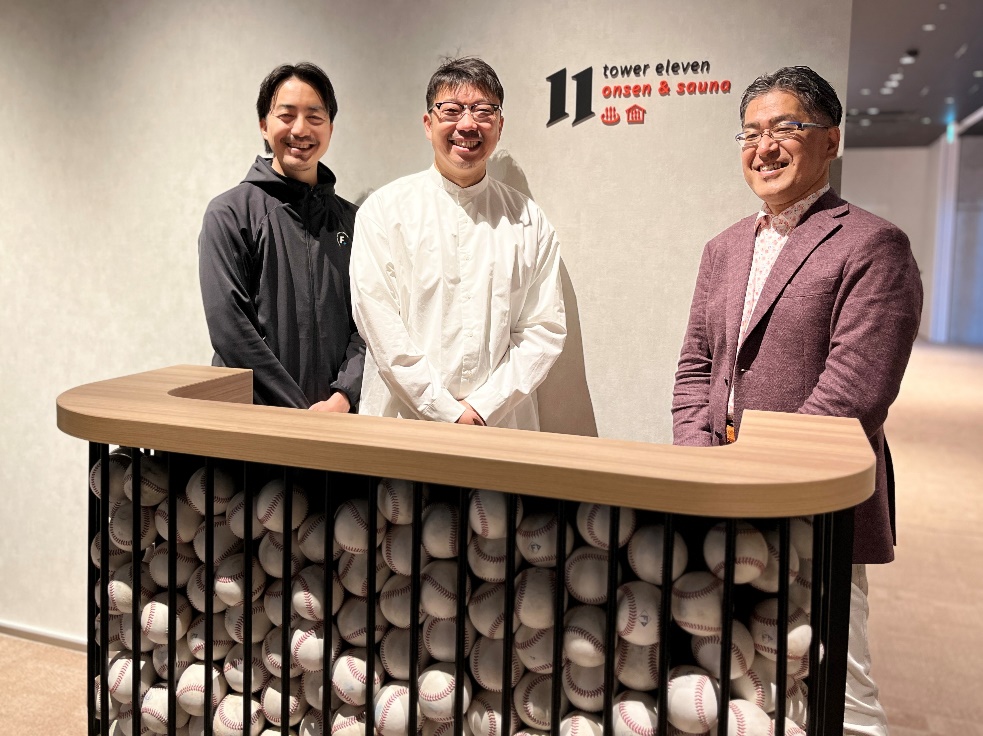
The Possibilities and Future of Sports Entertainment Spaces (Part 1)
2021/02/19- text and edit by
- Tetsuro Yasuda
"If you give up, the game is over"
This is a passage from a famous basketball cartoon,
It can be said that it is a gem name quote that everyone can sympathize with, not just basketball.
Since I was a child, I have experienced various sports such as baseball, basketball, and Ekiden.
I have learned lessons in life that go beyond just winning and losing.
Since joining the company, I have been involved in many commercial and customer-attracting facilities.
I have experience since I was a child, and I have been researching the field of sports entertainment for many years both at work and in my private life.
And I came to write this time while investigating various cases
I feel that
the sports entertainment space is entering an era of great change, and I wanted to consider that.
In this column, in the first part, we talked about "changes in the sports entertainment space",
In the second part, we will delve into the “elements necessary for the future sports entertainment space”.
*What is a sports entertainment space?
Refers to facilities and spaces that enhance entertainment, centered on sports. Examples include ballparks and stadiums for baseball and soccer games, arenas for basketball and ice hockey games, and stadiums for concerts and events. These facilities are designed and operated not only as venues for sports games and events, but also as facilities for spectators and participants to enjoy. Recently, an increasing number of facilities have enhanced their entertainment value by installing restaurants, shops, playground equipment, attractions, etc.
The advent of the sports entertainment space 2.0 era
What is the difference between a stadium and an arena?
By the way, everyone thinks of stadiums as baseball fields (ball parks), soccer stadiums,
When you think of an arena, you probably think of a large gymnasium or hall, but do you know the difference between the two?
According to Wikipedia, the difference between a stadium and an arena is
A stadium for indoor sports such as basketball and ice skating is called an arena.
On the other hand, even if there is a stand like an arena, a stadium for outdoor sports such as baseball, soccer, and track and field is often called a stadium.
It is stated. (Excerpt)
This time, the keyword "Sports entertainment space 2.0 era" was used in the title.
This is because I wanted to simply express the state that stadiums and arenas are entering a new phase as facility spaces.
 *Comparison image of 1.0 era and 2.0 era
*Comparison image of 1.0 era and 2.0 era
Movement toward the sports entertainment space 2.0 era (1)
Stadium ⇒ Improve facility value by combining functions to attract customers
First of all, regarding the stadium, from a mere dedicated ball game field, we will combine the function of attracting customers to the entire site,
It seems that it will
evolve in the future in the direction of increasing the purpose as a stadium park (soccer) / ball park (baseball).
This has the effect of increasing the value of the facility by attracting customers even on non-game days and non-events.
Originally, the terms stadium park (soccer) and ball park (baseball) originated in Europe and the United States, but in recent years, we have heard many plans to further evolve this way of thinking in Japan.
In this column, we define this flow of complex customer-attracting functions as the "2.0 era."
*Ball parks: Beyond the meaning of stadiums and ballparks for watching baseball games, facilities are changing not only to watch baseball games, but also as general facilities that include sales booths for food and goods, attractions, event spaces, etc. increase.
Movement toward the sports entertainment space 2.0 era (2)
Arena ⇒ Innovative facilities will be created through construction and operation by private companies
Next, regarding arenas, most of them used to be constructed and operated by the national government or local governments.
In recent years, there has been an increase in the number of “publicly established and privately operated” or “privately established and privately operated” plans that utilize the resources of private companies.
In this case, many monetization ideas and ingenuity will be required as a private business,
It is believed that this trend will lead to the creation of many innovative facilities that utilize the resources of private companies.
In this column, we define this change in construction and management as the "2.0 era."
Here, before delving into the elements necessary for the “Era of Sports Entertainment Space 2.0” in the second part, I will briefly summarize the revenue structure of stadiums and arenas, which is the basis of these businesses.
Business model for stadiums and arenas
Raise revenue by renting facilities to promoters
 *Image diagram of revenue structure of stadium and arena
*Image diagram of revenue structure of stadium and arena
First, the business model of stadiums and arenas can be broadly divided into three main characters: (1) facility owners, (2) promoters, and (3) visitors.
This three-way relationship is
The facility owner rents out the hall to the promoter, and the promoter rents the hall to hold events such as sports matches and concerts, attracting visitors.
In sports, there are cases where (1) the facility owner and (2) the promoter are the same company, in which case the home team owns the facility while hosting the match.
here,
(1) If you focus on the facility owner, you can earn income such as facility rental income / ancillary equipment rental income / advertising/sponsored income / restaurant/food sales income.
again,
(2) Focusing on promoters, revenues such as admission fee revenue/merchandise revenue/broadcast rights revenue/secondary content revenue/food and beverage sales revenue can be obtained.
Furthermore, as in the previous example, if (1) the facility owner and (2) the promoter are the same company, it is possible to obtain profits from both.
So far, we have organized the general business model for the facility as a whole.
Furthermore, regarding the VIP areas and concourse stores, where the characteristics of the facility are well represented and the factors that fluctuate in earnings are large,
I would like to organize it including the future flow.
* Concourse store: A store that is open along an indoor passageway (concourse) that surrounds the outside of the audience seating area.
The future of the business model for stadiums and arenas that raises profits (1)
Aiming to differentiate the facility,
There is a trend to further enhance theVIP area

First of all, there are various forms of spaces, even if they are generally called VIP areas.
① Private room type VIP BOX: Area where you can enjoy food and drinks in a private room
② VIP lounge: Area where you can enjoy drinks and food on your own in a large space
(3) Planned VIP seats: Areas that emphasize differentiated planning and aim to increase the average spend per customer
Although it is this VIP area, the unit price per customer is naturally higher than the general seat,
How to sell this area to large customers such as companies has a big impact on profits.
Therefore, business operators put a lot of effort into creating space and service that are suitable for high unit prices.
Especially overseas, where there is an extraordinary high-net-worth market, the scale and fulfillment of the VIP area is incomparable to the current situation in Japan.
On the other hand, many of the former VIP areas of domestic facilities were simple in terms of space, and the differences between facilities were not that large.
Recently, all facilities have begun to focus on differentiation, so it is expected that the VIP area will be further enhanced in domestic facilities in the future.
The future of business models for stadiums and arenas that raise revenue ②
According to the diversification of needs and styles,
A space where you can select your viewing style

Next is the concourse store where eating and drinking, food sales, and product sales are lined up.
This is also an important place in terms of earning non-ticket income.
This is because food sales, food sales, and product sales have a large profit margin, and if done well, will greatly increase profits.
However, concourse stores face the problem that customers tend to concentrate at certain times of the day.
For example, for baseball, sales are concentrated before games and between innings, and for soccer and basketball, sales are concentrated before games and halftime.
Furthermore, if it is a live performance, almost no one will come out to the concourse after the performance starts, and sales will concentrate before the performance.
As a result, not only is there unevenness in sales for each time zone, but only fast food that can be served in a short time,
I have a dilemma that there are only stores with the same lineup everywhere.
However, in these days when the needs and styles required for sports entertainment are diversifying,
By
providing a variety of MDs (business categories, menus) and dining spaces on the facility side, we create needs that allow us to spend time outside the audience at any time.
It is thought that the space will evolve into a space where various viewing styles can be selected according to the people and scenes that come with them.
*As ofFebruary 26, 2021
Examplesof sports entertainment spaces
What is"Hokkaido BallparkFVillage"that NOMURA Co., Ltd. was involved in planning and designing?
The Birth of a “Ballpark the World Has Never Seen”
Hokkaido Ballpark F Village is located on a vast site of about 32 hectares, including the new baseball stadium of the Hokkaido Nippon-Ham Fighters. A new creative community space that aims to create a town. Inside the stadium, there are facilities such as the world's first "natural hot spring and sauna in the stadium with a panoramic view of the field", the first hotel in the stadium with a panoramic view of the field in Japan, and a museum, making it an innovative stadium that can be enjoyed all year round. increase. NOMURA Co., Ltd. is involved in the creation of spaces within the premium area and the stadium, and also carries out project management for the welcome monument and agricultural learning facilities. It is expected to be a co-creation space that leads to the revitalization of the local community and social contribution.
Hokkaido Ballpark F Village, which can provide this innovative spectator style, will become more and more popular as an innovative facility in the future.
So far, as the first part, we have defined the change in the sports entertainment space with the keyword "2.0 era" and examined its flow. Next time, in the second part, we will delve a little deeper and consider the elements necessary to create facilities in the "2.0 era".
Read the second part of the article here
The Potential of Sports Entertainment Space and Its Future (Part 2)
Like this article?













